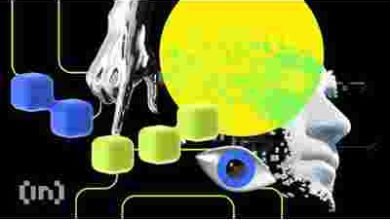Mastering the Art of Data Visualization in Design

Mastering the Art of Data Visualization in Design
The Power of Data Visualization in Design
Data visualization is an essential tool for designers to communicate complex information effectively. It involves transforming data into visual elements such as charts, graphs, and diagrams, making it easier for people to understand and interpret the data at a glance. Whether it’s for presentations, reports, or websites, mastering the art of data visualization can greatly enhance the impact of your design work.
Why is Data Visualization Important?
Data visualization plays a crucial role in design for several reasons:
1. Improved comprehension: Visualizing data allows people to quickly grasp trends, patterns, and insights that may not be apparent when presented in plain text or numbers.
2. Engagement: Eye-catching visual representations capture and retain users’ attention, encouraging them to explore and interact with the data.
3. Storytelling: Data visualization aids in telling a compelling story by presenting information in a structured and engaging manner.
4. Decision-making: Clear data visualizations provide key insights that enable better decision-making, both for designers and their clients.
Essential Principles of Data Visualization Design
Creating effective data visualizations requires attention to certain principles:
1. Understand your audience
Before designing any data visualization, it’s essential to know who your target audience is. Tailor your visualization to their level of knowledge and expertise, ensuring that it effectively conveys the intended message.
2. Choose the right visualization type
Different datasets call for different visualization types. Whether it’s a bar chart, pie chart, line graph, or scatter plot, select the visualization that best represents the data you want to present. Consider factors such as the data’s nature, relationships, and desired outcome.
3. Keep it simple and clutter-free
Simplicity is key to effective data visualization. Avoid overcrowding your visualizations with unnecessary elements, such as excessive labels or decorations. Instead, focus on presenting the essential information clearly and concisely.
Frequently Asked Questions (FAQs)
Q: How can color be effectively used in data visualization?
A: Color plays a crucial role in data visualization as it helps differentiate and highlight various data points. Use a color scheme that is visually appealing, consistent, and meaningful. However, be mindful of not using too many colors that may confuse or overwhelm the viewer.
Q: How can I make my data visualizations accessible?
A: Accessibility is important to ensure that everyone can understand and interact with your data visualizations. Provide alternative text for images, use descriptive labels, and ensure that your visualizations are compatible with assistive technologies. Also, consider using color combinations that are accessible to people with color vision deficiencies.
Q: Are there any tools that can assist with data visualization design?
A: Yes, there are numerous tools available that can assist in creating data visualizations. Examples include Tableau, D3.js, Google Charts, and Microsoft Power BI. Choose a tool that suits your needs and skill level, and explore its features to create impactful visualizations.
Conclusion
Mastering the art of data visualization is essential for designers looking to convey complex information effectively. By following the principles outlined above and using the right tools, you can create visually engaging and informative data visualizations that enable data-driven decision-making and enhance user engagement. Whether you’re designing for presentations, reports, or websites, data visualization is a powerful tool that should not be overlooked.



